Book Reviews by Genre: Graphic Novels/Manga

Pretty good, but the ending is not what I would have liked. Morgan is an introvert. And she’s a lesbian. Ever since her dad left the family, things have been getting tense between her and her mother and her brother. So one night, after a big fight, she goes down to the rocks. She slips and falls into the ocean, almost drowning. A silky rescues her, and Morgan is convinced that it is a near death experience when she kisses her. But when Kelpie shows up the next day with human legs, things get awkward.
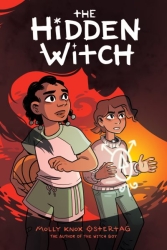
Aster and Charlie defeated Mikasi. Now, Charlie made a new friend named April. Trouble is, April is a witch, but she doesn’t know how to control her magic. Aster is finally able to take classes with the witches, but he’s still getting tested differently, so he takes an internship under his grandmother. Together, her and Aster start to drain Mikasi’s bad magic, but it’s taking some time. Now Aster and Charlie have to save April before it’s too late.
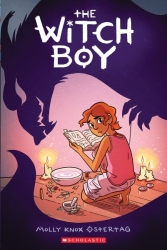
Aster is a boy. This is not a problem in itself, but he wants to be a witch. And in his family, girls are witches, and boys are shifters. It’s plain and simple. No exceptions. Aster sneaks around, learning the secrets, and is cast out every time. One day, he goes out, and meets a new friend, Charlie. Later, Aster has to take part in a family ritual where shifters get their animal spirits, and his cousin Sedge is taken in front of his eyes! Together, he and Charlie unearth long buried family secrets, and have to fight an old foe. Can they do it?
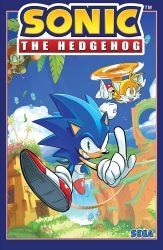
Are you a fan of Sonic The Hedgehog and all his awesome friends? Do you like high-speed action adventures? Are you just looking for a good comic book to read while you kick back with an afternoon chili dog? If so, then this is the perfect book for you! The amazing first installment in this action-packed series, writer Ian Flynn wows his readers with the latest escapades of the Blue Blur himself! Set after the story of the new Nintendo Switch release Sonic Forces, the collection follows Sonic as he races around the world following the war with his arch-nemesis Dr. Eggman, who has seemingly disappeared. However, his maniacal machines are still a threat to Green Hill, and Sonic, with his best friends Tails, Amy, and Knuckles, along side Princess Blaze, all must shut them down. Can Sonic solve the mystery that presents itself as events unfold? Featuring pages of magnificent cover art and the debut of a brand new character, this super-powered comic is guaranteed to be a smash hit!
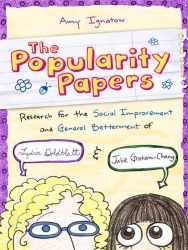
Now that I'm older, I really should be reading at a level closer to that of my peers. However, there's just something about some children's books that draws me to them, and The Popularity Papers definitely has that spark.
Lydia and her best friend Julie are in their last year of elementary school. Lydia's older sister underwent a dramatic change between elementary and middle school, in which she embraced goth fashion, secluded herself from others, and generally became a stranger to them. To avoid becoming like her, Julie and Lydia decide to observe and emulate the "popular" kids in order to get more friends before going into sixth grade.
First off, this book has no clear antagonist. Instead of "the popular kids" and the "nerds" being a black-and-white distinction, its easy to see how all the children in the story are just that - children. For example, popular girl Gretchen has no qualms over calling out another girl's odd and homophobic questioning of Julie's two dads.
I also love the diary-style dialogue in which Julie and Lydia communicate through scribbled notes in the margins, and the art in this story is very unique.
The book embodies a child's curious, scatter-brained nature while still being entertaining and maintaining themes of kindness, authenticity, and finding friends in unexpected places. It's a favorite of mine to re-read, and I highly recommend this book to read with young siblings, to clear the mind between heavier books, or just as a fun, rainy-day read.
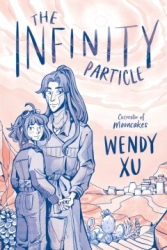
I loved this book so much! It is set in the future, where humanity has expanded and moved to Mars. We follow a girl called Clem, and her robot SENA, who have moved to Mars for an internship with Clem’s idol. While working at the internship, Clem meets a personal build humanoid robot named Kye. Soon, Kye starts to malfunction, and the only one who can help him is Clem. They both have to delve deep into their pasts to solve what’s going on, and they become very close along the way. This book is filled with mystery, romance and secrets hidden in the past. 10/10 recommend!

Sonic The Hedgehog Volume 4: Infection is Sonic-speed thrills from cover to cover! Dr. Eggman is gone for good. A happily retired handyman, he’s a threat no longer — or so everyone thought. Now, a new foe has emerged from the shadows and signs are pointing to the return of the doctor’s dark side. As Eggman’s allies slowly increase in numbers, Sonic must rush to find him again. It won’t be easy, though— the devious doctor and his fiendish friends are cooking up a new superweapon that even Sonic and friends can’t contain!!! Combing Ian Flynn’s story writing skills and the art of Adam Bryce Thomas, Diana Skelly, Tracy Yardley and Jack Lawrence, Sonic The Hedgehog Volume 4: Infection is a real treat!
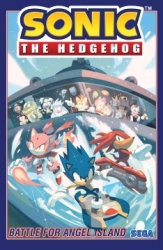
Sonic is back for more way-past-cool adventures in Ian Flynn’s Sonic the Hedgehog Volume 3: Battle For Angel Island! Neo Metal Sonic, the super-powered steel nemesis, has conquered Angel Island and claimed the Master Emerald as his prize. Now, Sonic, alongside Tails, Knuckles, Amy, Shadow, and the rest of the Resistance fighters, must prepare for the fight of their lives in order to prevent Neo Metal Sonic from reviving Dr. Eggman’s terrifying Empire. As the battle goes on, though, Neo Metal Sonic becomes increasingly stronger. Can Sonic stop the robot’s rampage, or will he succumb to the “perfect version” of himself? With awesome art by Tracy Yardley and Evan Stanley, no Sonic fan will be able to resist Sonic the Hedgehog Volume 3: Battle For Angel Island!

Ready for more exciting adventures? Sonic The Hedgehog Volume 2: The Fate of Dr. Eggman has just that! Since Dr. Eggman’s mysterious disappearance, Sonic has been dashing around the world hunting for him — and whoever is controlling his robot army. But when Sonic, with the help of the Chaotix Detective Agency, finally locates him, he’s in for a big surprise! And that’s not all— Shadow, Sonic’s grim rival, is also hunting for Eggman. While dealing with this problem, Sonic also must uncover the true identity of the Eggman Empire’s new leader. Sonic will have to be at his fastest if the day is going to be saved! Written by Sonic super-enthusiast Ian Flynn and featuring art by Tracy Yardley, Adam Bryce Thomas, and Evan Stanley, along with tons of fantastic cover art, this comic collection is essential for any action lover!
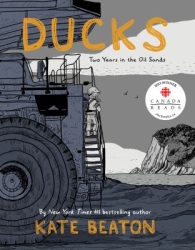
Having only really experienced Kate Beaton's web comic, Hark! A Vagrant and her sillier material, I was interested to see how a graphic novel of her life would play out on the printed page. I was shocked to find her somewhat whimsical style had so much emotion for a story that was assuredly a difficult one to tell. Ducks: Two Years in the Oil Sands is as gripping as it is frustrating that such working conditions remain this dangerous for women.
Telling the story of how Beaton paid off her student loans from art school in the fastest way possible, Ducks highlights the misogyny and sexism present in the (frankly) male-dominated field of petroleum. Working on the oil sands isn't safe in a physical sense, but add to that the "hanging with the guys" tropes that eventually lead to assault. It was hard to read sections of this book, knowing that men should be better than this. Beaton pours her trauma out on the page and it stuck with me in a way that only a graphic novel like this could convey.
I'd say that this book should be required reading for both men and women going into these fields, but I know it probably wouldn't change anything. There's too much inertia to effect the significant changes that would need to happen. This shouldn't lessen discussions about the depression, substance abuse, and suicide that men in these jobs endure, but instead highlight the tenuous strengths and inevitable weakness of humans pushed to their breaking points. For some, though, it is a lifestyle. For the lucky ones, they make it out alive in as little time as possible—which is still long enough to have lasting negative effects on their lives.
A deeply moving memoir about women working in a male-dominated field, I give Ducks 5.0 stars out of 5.
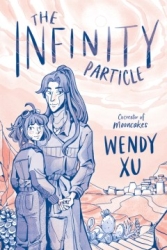
The Infinity Particle is about a futuristic world where humans have colonized Mars and have advanced technology. Clementine is a young girl who has just moved to Mars to get a start at a new life. She is working with her hero, as she is one of the most talented people to work in the field of robotics. On her first day, her and her personal robot SENA meet Kye, a personal humanoid robot built by Clem’s hero. Soon, Clem finds out her hero is not who she believed her to be, and Kye is malfunctioning. Clem and Kye have to work together to solve this mystery, and in doing so, they unearth both Clem and Kye’s troubled pasts, and they grow closer together. It’s a great book!
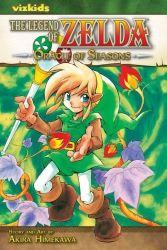
I like this book a lot because of how cute and funny it is. The way this book is written makes it very exciting to read. Link is shown how he can positively interact with any type of living creature. His cute companion Peeko that's been with him since a chick is adorable and such a fun character to have in the book. The way the art is drawn makes the whole thing cuter and more adorable than to how it could have been if it wasn’t drawn in this style.
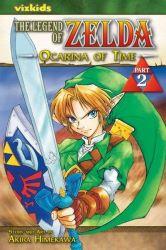
The second part of the Ocarina of Time is a well drawn and written book. It was interesting seeing all the changes that happened in seven years after Ganon won and got the triforce. There are funny moments in it when Link with a child's mentality and an adult's body confuses people with how he does things. It’s cute when Link meets people and animals he made friends with seven years ago where he remembers it so well. The bonus story with the entirely new character Rouro was an interesting way to see Link help animals/people when it doesn’t involve fighting a monster.
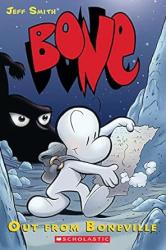
Bone is one of those comics I’ve always been aware of but haven’t gotten around to reading until now. It’s interesting how the visual style of the titular characters evokes an older style of comics, while the other characters in the world feel more modern. The storytelling runs at a pretty fast pace that kept me turning the pages to see what happens next. There’s some pretty good humor here, as well as tense situations to keep it from becoming too silly. I can definitely see the appeal and why it’s been a notable comic since its origins in the early 1990s.
My only qualm with this book has to do with the main characters. The three “Bones” feel out of place in the fantasy realm, let alone our world. It also took me a while to distinguish visually between Fone Bone and Phoney Bone, which was only aided because this book mostly follows Fone. These characters are quite expressive for their simple design, which helps. I understand their simple white design would make producing the (originally black and white) comic easier, but they’re so jarring when everything else is so detailed.
It's funny how the Japanese isekai genre has picked up in recent years, only to have been solidly pre-dated by Bone. The concept of a group of people being transported/lost in an unfamiliar fantasy world is a huge genre today. The fantasy world-building Jeff Smith does in this first volume definitely holds to a lot of fantasy tropes while also taking humorous turns that make the world unique. I’m glad I picked up the colorized version of this first volume and I’ll definitely be reading the next volume when I get the chance.
A bold take on the isekai genre in an American style, I give Bone, Vol. 1 4.0 stars out of 5.
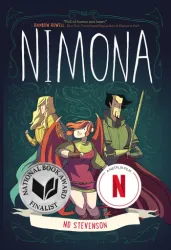
It's a rare treat to find a graphic novel with well-rounded characters, an interesting story, and an art style that has range. Even if it started as a webcomic, Nimona shows a surprising amount of depth for the medium. Sure, some of the early parts were clearly encapsulated in a serial format, but they were a quick way to introduce the characters and setting. When the story has some room to grow, it gets even better. It's definitely a page-turner, and I devoured it as fast as I could.
The heart of Nimona is its characters. Flipping the hero's journey on its head and focusing on the villain's perspective was a fun touch. Nimona's chaotic nature was a fun contrast to Lord Ballister Blackheart, who just wanted to do his villainous revenge alone. Perhaps the biggest surprise was how naturally the book handles LGBTQ+ themes. None of it felt forced or odd, even in a science fantasy setting. It was just there, with no winking nods or awkward attention brought to it. Then again, it was also a fantastic adaptation of the "enemies to lovers" trope—or would it be "lovers to enemies"?
As someone who likes to write science fantasy stories, I absolutely loved the science fantasy setting. It has all the trappings of a medieval time, just with video chats, laser guns, and dragons co-existing in a way that makes perfect sense. This is the kind of thing I can completely get behind. If anything, I hope this book inspires more writers to jump into this genre, as I desperately want to read more books like this. It's like the best parts of sci-fi and fantasy brought together in an awesome (but also deeply moving) story.
A science fantasy graphic novel with excellent characters, story, and art, I give Nimona 5.0 stars out of 5.
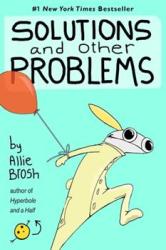
My first introduction to Allie Brosh's work—as I'm sure is the case for many—was the "all the things" meme. For those looking for more depth from these drawings, look no further than the humorous illustrated memoir, Solutions and Other Problems. I have never quite read a book like this. When I picked it up off the shelf, I was expecting a graphic novel, only to be surprised with big chunks of text between illustrations. Clearly, the best of both worlds here. You'll laugh. You'll cry. You'll be glad you read this book.
While it might be easy to discount the simple drawing style at first glance, many illustrations in this book prove to be quite exquisite. The stories themselves, which are not all silly or humorous, aid this distinction. Solutions and Other Problems subverted my expectations by being both hilarious and deeply profound. I've never read a book that had both a story about an obsessed kid stealing things from a neighbor's house and an examination of loss and depression. And yet, they both work in this context.
As these essays are deeply personal, I can say I don't particularly agree with some of the choices presented here. And that's fine. Everyone is different, and these are definitely the stories the author wanted to convey. I just don't want to endorse this book without providing the caveat that I probably wouldn't do things the way the author did them. Still, if you're going through some tough times, then perhaps this book will help break through to you with its humor while also comforting you with the idea that your feelings are valid and shared by other people.
The best half-graphic novel/half-memoir I've ever read, I give Solutions and Other Problems 4.0 stars out of 5.
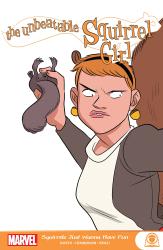
After reading the second collection of The Unbeatable Squirrel Girl, I was a little worried that this third collection would be more of the same. Comedic situations involving a variety of Marvel heroes and villains punctuated by some silly squirrel-based shenanigans. And while The Unbeatable Squirrel Girl: Squirrels Just Want to Have Fun has these things, there was also a fair amount of character growth for the titular superhero.
I appreciated that this volume included some of the lore surrounding Squirrel Girl, especially since we've only seen her in modern settings in most of these issues. Knowing what it was like growing up as Squirrel Girl helped ground the character a little more and make her relatable. The arc where she teamed up with Ant-Man was also entertaining because of the change of scenery (everything is in New York, give Canada a chance!). Still, these comics were a bit "samey" to the rest of the ones in the previous two volumes.
What really struck me in this collection was the "flying squirrel" arc. Being unbeatable can become a bore after a while, so giving an antagonist that was clever enough to push Squirrel Girl to grow as a hero was a refreshing change. Perhaps my exposure to shonen-type mangas where the characters power up and grow stronger in each arc is what drew me to this story. Because while having the powers of and over squirrels is a neat trick, being able to fly is a significant upgrade to this superhero's arsenal of abilities. Plus, flying squirrels are inherently cool creatures anyway.
More Squirrel Girl adventures with good character growth added in, I give The Unbeatable Squirrel Girl: Squirrels Just Want to Have Fun 4.5 stars out of 5.
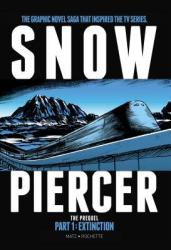
One of the best original sci-fi movies to come out in the last decade, in my opinion, was Snowpiercer (2013). The story originated as a 1982 French graphic novel under the name of Le Transperceneige. While I haven't read the original source material, I decided that a prequel graphic novel was probably pretty safe to read. I figured the events leading up to the world ending and a perpetual train being launched wouldn't spoil anything for me (I also haven't seen the TV show either).
While it's only a scant 90 pages, part 1 of this prequel trilogy, Extinction, had nothing I didn't already know in it. Most of the plotlines in this book were fairly generic end-of-the-world-type stories. Each one obviously would lead to the last of humanity boarding this infinitely running train, which was no surprise. It probably didn't help that there weren't that many distinct characters to latch onto in this book to make it more relatable. I understand that it's laying the groundwork for the next two books, but it almost felt that this part of the prequel series was unnecessary.
Perhaps I'm more inclined to cleaner art in graphic novels I like to read. This book had a rough, almost sketch-like style I found to be unpolished. Maybe that was the feeling the illustrator was going for, but some scenes were hard to parse visually because of how dark and thick the lines were. Granted, I still want to go back and read the original graphic novel to see if the style fits better for the actual post-apocalyptic story. However, for this "real world" setting, the art style feels too heavy even for a pre-apocalypse story.
A somewhat unnecessary story with a heavy visual style, I give Snowpiercer - The Prequel Part 1: Extinction 3.0 stars out of 5.
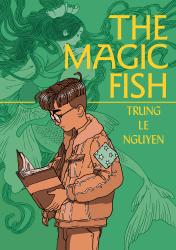
This graphic novel has a really interesting way of storytelling- it has multiple stories running simultaneously that add depth to one another. The author uses fairy tales, like the Magic Fish, to represent the actual characters in the main story. It follows a young boy who struggles to tell his mother he is gay and he experiences a crush on one of his close friends. It touches on some sensitive topics but ends really sweetly. Another bonus is the gorgeous artwork and use of color in the different storylines. Despite being a quick read, it was meaningful and a good story.
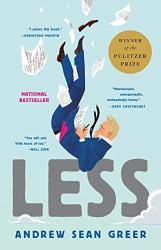
The book Less follows a middle-aged, gay author named Arthur Less, and recounts his loves and losses from a third person point of view. His lover of many years, Freddy, leaves him for a more serious relationship, he goes on a trip around the world partly to avoid Freddy's wedding and his upcoming 50th birthday. The book explores themes such as love, heartbreak, self-doubt, fear of aging, and sexuality. In Less's journey, he discovers that he can't run from his fears by traveling across oceans, he must face them. A Pulitzer prize winner, the language in the book is mature and riddled with literary references spanning throughout history. The author uses many intricate metaphors to describe Less's situation, and then book ends with an incredible twist that will make your jaw drop. I would recommend this book to anyone who likes contemporary literature and wants a meaningful, yet entertaining read.
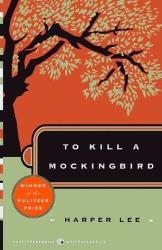
To Kill a Mockingbird by Harper Lee explores themes of race, justice, and morality through the eyes of a young girl in a small Southern town. Set in the 1930s, the novel follows Scout Finch as she grows up and navigates the complex social and political landscape of Maycomb, Alabama. The plot of To Kill a Mockingbird is both compelling and emotionally resonant. Lee’s exploration of racism and prejudice is nuanced and insightful, offering a powerful critique of the social and political systems that perpetuate injustice. The trial of Tom Robinson, which forms the center of the novel, is both tense and heartbreaking, with Lee masterfully building tension and suspense as the case unfolds. This novel is very heavy in symbolism and encapsulates the perspective and voice of a young, naive girl very successfully. I enjoyed the wide variety of characters, bits of humor, and overall depth of meaning and thought that To Kill a Mockingbird provides. Overall, it was a very thought-provoking and deep read, perfect for classic lovers and those who enjoy realistic fiction.
Reviewer Grade: 11.
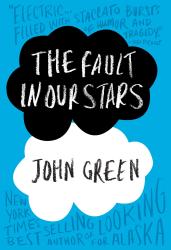
I love this book! The fault in our stars is a book that really tugs at the reader’s heart strings. The book starts off with a 16 year old named Hazel Grace meets a cancer survivor, Augustus Waters. Hazel and Augustus begin to fall in love, but they don’t want to share their feelings with one another. Throughout the novel, Hazel and Augustus share many similarities (an example being their favorite book and favorite author). This romance story is on another level. It’s heartbreaking and astonishing at the same time. Every time I turned the page, I did not want the story to end. The entire story is so well composed and the writing is absolutely breathtaking. John Green did such and amazing job writing this beautiful tale, you really feel like you’re in the story. The challenges and hardships Hazel and Augustus face lead them to new and better horizons. The Fault in Our Stars is an incredible romance novel that everyone should read one day. From the storyline to the imagery, this story is the best romance novel in my book.
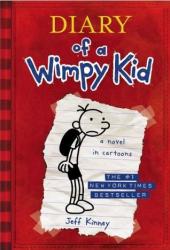
I absolutely love this book series. I started reading Diary of a Wimpy Kid when I was in elementary school when it got recommended to me by a friend. I have no regrets. Even today I still love reading these books. The art in them is exceptional and unique as well as the stories and writing. I have read everyone of these books in the series, but I still think that the first one is a classic.
Greg Heffley is an extremely unique character within the Diary of a Wimpy Kid series. The author of this book gives Greg an almost “cartoony” personality. At first, I didn’t like Greg, but he definitely grew to become my favorite character in the book. The first book in this series introduces Greg and all of the characters and hardships they face. I would 100% recommend this series. If you want to start the series, read this one!
Reviewer Grade: 8
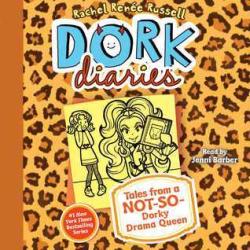
Next to the 1st book in this 12 series collection, this one is hands down my favorite. Nikki goes through a series of events in this book and it is a real attention grabber. I loved these books as long as I can remember, and I picked this one up today and realized how awesome these books are! Even in eighth grade, these books still leave me in a feeling of awe. I HIGHLY recommend these books to anyone looking for an easy to read book series. Considering this is the ninth book of this incredible series, I am not too sure how to sum this book up without spoiling the rest of the story line, but this is a ten out of ten book and the collection as a whole! 10/10 highly recommend!!!!
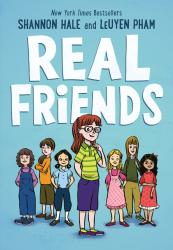
The graphic novel “Real Friends” is about a girl named Shannon. Shannon and Adrienne have always been best friends, but when Adrienne begins hanging out with the popular girl, Shannon is just left in the dust. The novel follows Shannon as she goes through one big roller coaster called middle school. The book touches on the subject of how difficult middle school can be and challenging middle school friendships.
I enjoyed this book because I can relate to the lessons and feelings Shannon has towards her friendships and surroundings. Middle School is a tough and confusing time in everyone’s life, and knowing that you have similar experiences to others is nice to know. I would recommend this book to anyone who is struggling to find themselves throughout middle school or even awkward years.
Reviewer Grade: 8

Mehh
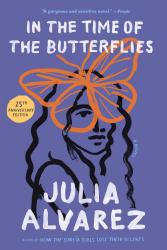
In the Time of the Butterflies by Julia Alvarez is a fictionalized account of resistance to the dictatorial rule in the Dominican Republic inspired by the stories of the three Mirabal sisters who were murdered in 1960. Alvarez expertly captures the terrorized atmosphere of living in a police state and the courage of a few to stand up in resistance. Despite the underlying anguish and dread, the novel is brimming with romance, hope, and faith as Dominicans try to find life under a dictator. Suppose you want a captivating novel enriched with courage, feminism, and intimacy and are willing to read a challenging narrative to stomach. In that case, this anxious page-turner will not disappoint.
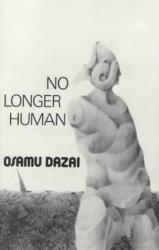
No Longer Human is a cultural phenomenon, widely known as the second most bestselling novel in the history of Japan. Within, Osamu Dazai explores the life of a man who feels that he has never been a part of humanity, and his desperate strivings to find a piece of happiness in a life full of terror and vice. The timeless, existential themes of the novel will haunt the reader past the last page.
I chose to read this book because I'd seen a lot of people all over the internet praise it as the saddest book they'd ever read. There are about a thousand videos and essays and think pieces about the depressing nature of this book, and how it can devastate and eviscerate emotionally. Weirdly enough, I don't see it. The book is definitely very sad, but to me it didn't extend very far beyond the other grimly written books about very sad people with very sad lives. However, the psychology of the protagonist definitely sets the book apart. Unlike other books of the same nature, this book cuts to the bone by showing the terrifying underbelly of humanity. The protagonist is paralyzed by fear because he comprehends what many of us forget: that we are at all times surrounded by our own apex predators. Each of us has our own deep desires that could stir us to violence at any given time. We lie and cheat and steal to get what we want, effortlessly wearing masks that can obscure our entire character and can last a lifetime. The protagonist isn't like other antiheroes of hardened books about the horribleness of humanity. He doesn't accept it, or rail against it. He is very much afraid of it, and does everything he can to get out of its way. The protagonist's perspective is also interesting in the way it views humanity. The detachment of the central character is clinical, and portrays the characters in an alien light. He is scared of humans, but he also doesn't understand them. He sees all hunger and desire as something strange, and he wonders how people can be so insincere so easily. But despite his abject horror of humanity, the protagonist is slowly transformed into everything he despises and cannot understand. Perhaps the most fascinating part of this tale is how the protagonist is dragged, slowly but steadily, into the grips of humanity's vices and horrors.
Despite the intriguing nature of the protagonist's psychology, I didn't find the rest of the book as interesting as I thought I would. I was likely just disappointed that after all the build up, this amounted to another very well done, very sad bildungsroman in the vein of Catcher in the Rye or Little Friends. There's also issues with the way the writer portrays women, but since everyone in the book is fairly dehumanized it doesn't bother me as much as I thought it would. All in all, No Longer Human is a fascinating journey through the most base natures of humanity, all through the eyes of a man who feels disqualified from being human. I'd recommend this to someone who wants something dark and strangely fascinating. I would not recommend this to anyone who is anywhere close to being in a bad place, or anyone who got annoyed by Holden in Catcher in the Rye. This guy is ten times worse.
Reviewer Grade: 12
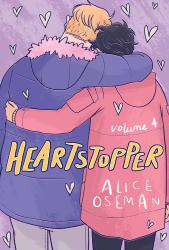
Every time I think, "Alice Oseman can't possibly outshine previous Heartstopper books," she proves me wrong! This graphic novel had beautiful art and great representation. Heartstopper: Volume Four follows Charlie and Nick as they deal with separation anxiety, saying "I love you", and working through Charlie's declining mental health. There are some really important themes introduced, the biggest being Charlie's anorexia and OCD diagnosis. This was a really emotional part of the book, but it is also crucial for more young adult books like this to spread awareness about how common mental illnesses are. Charlie and Nick's relationship is strong, but it was also cool that they discussed how spending time with other loved ones instead will strengthen their relationship. Plus, their friends are diverse, endlessly kind, and could easily be real people. It is always a joy to read this series, and I can't wait for Volume Five!
Grade 12
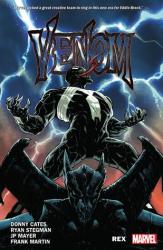
Donny Cates was chosen by Marvel Comics back in 2018 to be the writer for Venom, and they picked Ryan Stegman as the artist. The result was a truly wonderful three year comic book run, very detailed and planned out by Cates, and with phenomenal artwork by Stegman.
They also introduced some very important, new things to the Venom mythos.
Eddie Brock, AKA Venom, discovers that centuries ago, an evil god called Knull created a race known as the symbiotes. He tried to use these beings to revert the universe back to it's former state of darkness, but his plans for foiled by Thor, god of thunder.
But now, the presence of Knull is felt once again within the symbiote hive mind, and Venom must stop him.
It's an interesting premise, and is truly great if you continue reading the series past this first volume. Stegman's art is fantastic as well.
I highly recommend this comic if you are fan of Venom and Marvel comics in general.